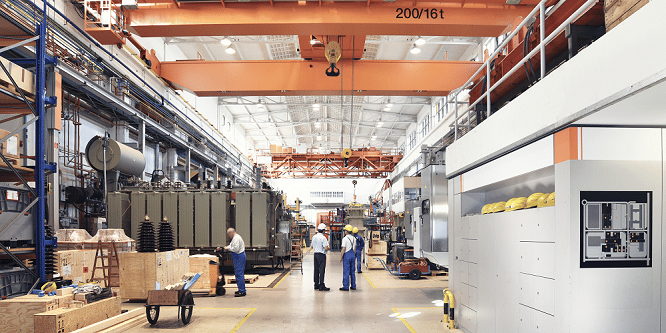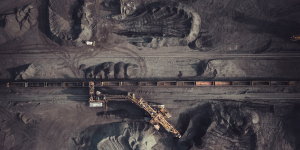TAKEAWAY: Employees in the manufacturing industry have physical jobs that come with many risks. These risks can lead to common musculoskeletal injuries — here are some proactive prevention tips you can use to keep your workforce safe.
Table of contents
- Fitness-to-Work Testing FAQs
- Most common musculoskeletal injuries in the manufacturing industry
- Most common causes of musculoskeletal injuries in the manufacturing industry
- Musculoskeletal injury prevention tips for employers in the manufacturing industry
- Evaluate Your Injury Prevention Strategy!
- You may also be interested in…
Fitness-to-Work Testing FAQs
SureHire’s Fitness-to-work (FTW) evaluations help employers understand an individual’s overall health status and provide recommendations for work accommodations and/or restrictions when necessary. Should an incident occur, employers can also use the information provided through our FTW when applying for cost relief through their province’s worker’s compensation board.
Check out this frequently asked questions video and contact us today to request a quote.
Work-related musculoskeletal disorders can significantly affect the health of workers and negatively impact the bottom line for businesses. This is due to injury treatment costs, decreases in worker productivity, and missed workdays. Accounting for around 33% of all worker injury and illness cases, work-related musculoskeletal disorders are among the most commonly reported cases of lost or shortened work time. The manufacturing industry encompasses many different job roles, each of which carries its own degree of risk for workplace-related musculoskeletal injuries.
Manufacturing covers a broad range of industries. To get a concept of the size and variety of roles within the manufacturing industry, think of any physical item. It has been through a manufacturing process to transform it from raw materials to a finished product. Food, beverages, textiles, transportation, electronics, and machinery are just a few examples of the many industries that have a manufacturing sector. From office workers to heavy industrial work, this article explores some of the common musculoskeletal injuries in the manufacturing industry, and how the risks for these injuries can be mitigated.
Most common musculoskeletal injuries in the manufacturing industry
There are various types of musculoskeletal disorders and injuries that can affect workers in the manufacturing industry. Although the back is a commonly injured area, there are many joints and muscles in the body that could be affected as well. The nature of the injury is likely to be related to:
- The types of movements and positions that are commonly used in a specific job role
- The equipment used
- Individual factors, such as an individual’s existing health conditions
For example, an office worker in the manufacturing industry could be at risk for a repetitive strain injury in the hands and wrists or carpal tunnel syndrome, both from excessive use of a keyboard and mouse. On the other side of the manufacturing spectrum, a worker who is performing repeated heavy lifting may have a relatively high risk of sustaining a lower back injury.
A study of musculoskeletal diseases in heavy industrial workers in Korea showed that the most common conditions for employees in the manufacturing industry were lumbar sprains and spasms, followed by shoulder sprains and spasms. This study also identified that welders had the highest prevalence of musculoskeletal disorders. Other occupational categories with a significant prevalence of musculoskeletal disorders included crane operators, drivers, assemblers, and metal cutters.
Another study of metallurgical industry workers in Brazil showed that the upper limbs were the most commonly affected areas of the body. The shoulder was the most commonly injured area, followed by the wrist/hand, and then the elbow/forearm. Job roles included cutting and bending metal tubes, assembling, welding, calibrating, and packaging.
Studies like these help to highlight that the job role and the equipment used are correlated with certain types of injuries and commonly affected areas of the body.
Most common causes of musculoskeletal injuries in the manufacturing industry
Biomechanical risk factors for workplace-related musculoskeletal disorders can often be linked to the types of tasks that are performed. For example, prolonged standing and heavy lifting is associated with a higher risk for musculoskeletal injuries in the back. High repetition, strain, and pinch force are associated with an increased incidence of musculoskeletal injuries in the hands and wrists.
Some of the main factors associated with musculoskeletal injuries in the manufacturing industry include:
- Repetitive movements
- Awkward or uncomfortable movements and postures
- Poor ergonomics, including anything from workstation set up to lighting, noise, temperature and humidity, and ventilation
- Excessive and/or prolonged force, contact stress, vibration, or speed
- Performing tasks for a long period of time without sufficient rest breaks or alternative activity periods
- Personal factors such as physical condition, sleep status, and other general health factors, such as a chronic illness
Musculoskeletal injury prevention tips for employers in the manufacturing industry
There are many steps that employers can take to proactively protect their workforce from musculoskeletal injuries. These steps can be adapted to match the job requirements and needs of the individual worker.
Determine the main risk factors for musculoskeletal injuries, specific to each job role in the workplace
Identify specific movements and positions within each job role that can pose an increased risk for musculoskeletal disorders. These include prolonged standing, heavy lifting, twisting, reaching, pushing, pulling, bending, awkward postures, and repetitive movements.
Examine each aspect of the work environment that could be associated with an increased risk for musculoskeletal disorders. This includes the equipment and machinery that is used for job tasks, workstation set up, and environmental factors such as lighting and temperature.
Once a full job risk analysis has been completed and the major contributing factors have been identified, actions can be taken to help ensure the risks are minimized.
Make adjustments and additions to equipment as required
Based on what was identified in the risk assessment, some of the steps that could be taken include the following:
- Adopting appropriate personal protective equipment (PPE) for the job task such as hard hats, safety goggles, or ear plugs.
- Using products or devices to help reduce the physical impact on the workers. Examples include lighter equipment, mechanical assist devices for heavy lifting, or handles on containers for easier carrying.
- Optimizing the workstation set up and overall environment to suit the worker. For example, invest in ergonomic chairs, adjustable desks, and ergonomic aids specific to the job role. Consider where tools and equipment are placed to ensure they are easily accessible for the worker.
Adjust workplace protocols as required
Reassess job roles and what they entail. Ensure adequate rest breaks and task rotations are included and shorten shift times if required.
Provide health and wellness training and education for employees
Identify risk factors specific to individual employees. These could include current and previous injury and health status. Ask employees about the aspects of their job that cause physical or mental strain. From there, both general and personalized initiatives can be developed to help reduce the risk for work-related musculoskeletal injuries.
Health and wellness education can address various areas of health that may directly impact the risk for musculoskeletal injuries. Examples include physical activity levels, smoking status, nutrition, stress levels, and overall mental health and wellbeing. Initiatives could include:
- Education on lifting techniques
- Education and training on stretching and muscle-strengthening exercises
- Stress reduction therapies and techniques (you may wish to consider investing in your employees’ mental health and wellness through the use of programs like EQ Resilience and EQ At Work. Learn more here).
- Healthy eating guidance
- Education on early warning signs of musculoskeletal disorders

Evaluate Your Injury Prevention Strategy!
Fitness-to-work testing is one way to ensure your workforce can meet the physical demands of a job, and also gives you the ability to modify work tasks and accommodate workers. This type of occupational test leads to reduced injury claims and increased the health of your employees long term.
Learn more about SureHire’s Fitness-to-Work Testing Program here.
You May Also be Interested in…
- Do You Have Reasonable Suspicion?Employers cannot initiate reasonable suspicion testing without first going through the 5-step process. Reasonable suspicion training provides critical information about how to initiate reasonable suspicion testing, including the 5-step process and other tools that employers can use to help manage the misuse of alcohol and drugs in the workplace.
- An Employer’s Guide: What You and Your Employees Need to Know About DOT Drug & Alcohol Testing When implementing or maintaining DOT Drug & Alcohol testing, there are key areas that employers should consider.
- SureHire Occupational Testing Acquires COHR Health: A Positive Step Towards Safe, Healthy, Productive Workforces and CommunitiesWe are thrilled to announce that today, May 6, 2024, SureHire Occupational Testing has officially acquired COHR Health, a well-known leader in occupational health services. Read on…
- Occupational Testing Use Case – MiningIn this case study, we will explore how mining companies can use various types of occupational tests to reduce Total Recordable Incident Rates (TRIR) long term.
- 9 Strategies to Keep Workers Cool on Drilling Sites During Hot Summer MonthsThis article delves into strategies to keep workers cool and safe on drilling sites during the hot summer months.






